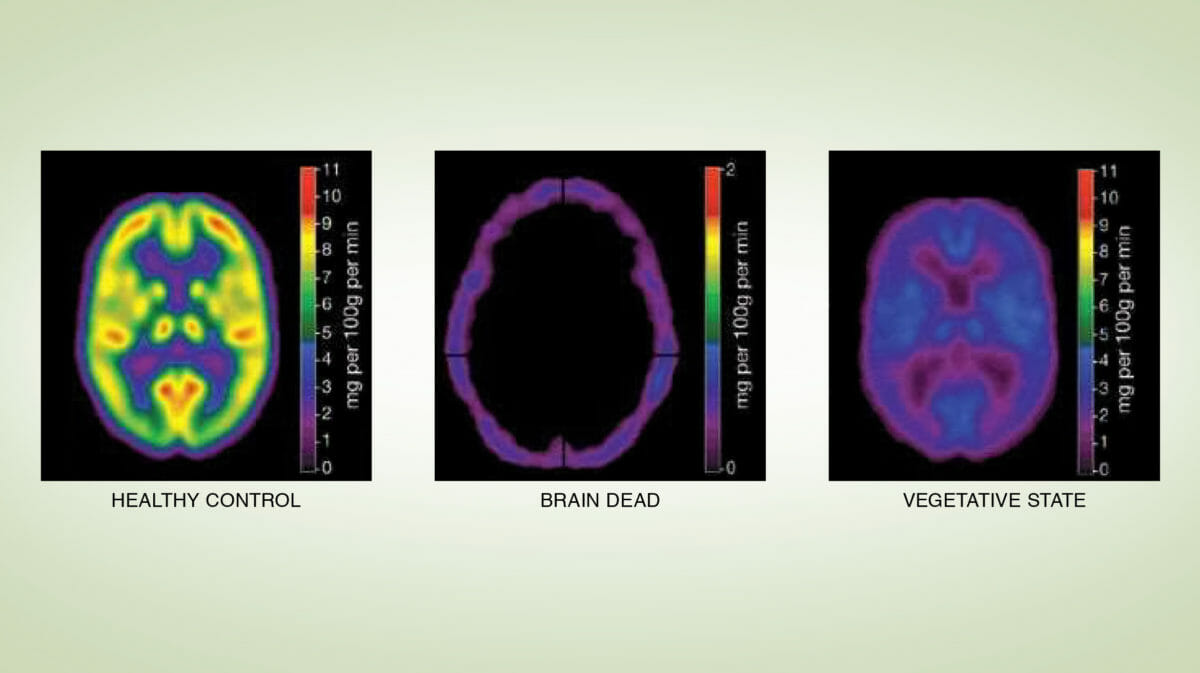¿Cuál es la diferencia entre un coma y la muerte cerebral?
Respuesta: Hay mucha diferencia.
ACTUALIZACIÓN: Si tiene familiares o seres queridos actualmente hospitalizados y está considerando la posibilidad de donar y salvar vidas, haga clic aquí.

Coma
El coma es un estado de falta de respuesta.1 El coma es un estado profundo de inconsciencia con los ojos cerrados en el que una persona no es capaz de responder a las personas o al entorno que la rodea. En coma, el paciente está vivo y hay cierta actividad cerebral. Dependiendo de la gravedad de la lesión, el tiempo de recuperación varía y los comas pueden ser temporales o permanentes.
Los pacientes en coma pueden presentar respuestas del tronco encefálico, respiración espontánea y/o respuestas motoras no intencionadas. El coma tiene tres posibles desenlaces: progresión a la muerte cerebral, recuperación de la conciencia o evolución a un estado de conciencia crónicamente deprimida, como el estado vegetativo.
Los pacientes en coma no se tienen en cuenta para la donación de órganos, ojos o tejidos.
Muerte cerebral
Según la Academia Americana de Neurología, "la muerte por criterios neurológicos, comúnmente denominada muerte cerebral, se produce en individuos que han sufrido una lesión cerebral catastrófica, sin evidencia de función del cerebro en su conjunto, estado que debe ser permanente."2 La muerte cerebral se reconoce legal y médicamente como fallecimiento. La muerte cerebral es el resultado de la inflamación del cerebro; el flujo sanguíneo en el cerebro cesa y sin sangre para oxigenar las células, el tejido muere.
El cerebro realiza muchas funciones, como el pensamiento, el movimiento y todas las funciones neurológicas que permiten al cuerpo mantener la presión sanguínea, el ritmo cardíaco, la temperatura corporal, las hormonas, la respiración, etc. Cuando una persona se deteriora hasta alcanzar la muerte cerebral, todo el sistema del cuerpo se detiene. No puede respirar, su corazón no puede latir y su cuerpo no puede funcionar una vez que su cerebro muere. Hay que iniciar medidas médicas artificiales masivas para mantener la función de los órganos (como la asistencia ventilatoria), pero estas intervenciones son sólo una medida temporal.
Prueba de muerte cerebral
Las organizaciones de obtención de órganos (como LifeSource) no determinan la muerte cerebral. En su lugar, los médicos del hospital, que son independientes del proceso de donación y trasplante, son los responsables de determinar y declarar la muerte.
Los médicos y el personal sanitario llevan a cabo una evaluación exhaustiva para determinar la muerte cerebral, realizando varias pruebas para confirmar que no hay actividad cerebral de acuerdo con estrictas normas médicas.2
La donación de órganos sólo es posible una vez que se ha confirmado la muerte cerebral y se ha determinado la hora del fallecimiento.
Donación tras muerte cerebral
La normativa federal obliga a ofrecer a las familias de un paciente con muerte cerebral la opción de donar órganos. Si la familia rechaza la donación, se suspenden el respirador artificial, los medicamentos y los líquidos, tras lo cual el corazón se detiene. Si la familia dice que sí a la donación, interviene la organización regional de obtención de órganos (LifeSource en MN, ND, SD). El cuerpo del donante se mantiene en funcionamiento por medios artificiales, como un respirador, hasta que se obtengan los órganos y tejidos para realizar un trasplante que salve vidas.
Si apoya la donación, es importante que documentar su decisión. De este modo, sus seres queridos no tendrán que tomar la decisión cuando usted fallezca.
Citaciones:
- Tindall SC. Nivel de conciencia. En: Walker HK, Hall WD, Hurst JW, editores. Clinical Methods: The History, Physical, and Laboratory Examinations. 3ª edición. Boston: Butterworths; 1990. Chapter 57. Disponible en: https: //www.ncbi.nlm.nih.gov/books/NBK380/ ︎
- Academia Americana de Neurología. (2023). Pediatric and adult brain death/death by neurologic criteria consensus guideline. https://www. neurology.org/doi/10.1212/WNL.0000000000207740 ︎
 Ir al contenido principal
Ir al contenido principal
